
Around the Baltic Sea: 16 Days – 8 Cities by Train, Ferry, and Bus
How about taking a train trip to all the capitals of the countries around the Baltic Sea? The idea for this trip took shape last year. One of the reasons was my desire to spend a few days in Stockholm again. I visited the Swedish capital on my first solo trip at the age of 18. Since then, exactly 18 more years have passed. This practically screams for a revival, right?
And since the journey from Zurich to Stockholm by train takes a bit more time, the idea of a simple “city trip” turned into a 16-day tour around the Baltic Sea with stops in Hamburg, Stockholm, Helsinki, Tallinn, Riga, Vilnius, Warsaw, and Berlin. True to the motto, the journey is the destination. I had already visited six of the eight cities on previous trips, but Vilnius and Warsaw were new capitals on the route for me.
If you’re thinking, a city trip to Stockholm would be pretty cool – but 16 days? Can’t it be faster? Of course! With this train connection, you can reach the Swedish capital from Zurich in less than 24 hours:
Departure from Zurich Central Station at 09:59 AM with the ICE towards Hamburg
Arrival in Hamburg at 7:29 PM, continuing at 10:03 PM with the night train of the Swedish state public transport company SJ
Arrival at Stockholm Central the next morning at 9:37 AM
As another night train option, the route Hamburg – Stockholm is also seasonally served by Snälltåget. When looking for tickets/connections, it is recommended to check both the SJ and the Snälltåget websites for suitable offers.
Overview of our Baltic Sea tour route
For anyone interested in a longer train trip, the following sections describe the individual stages of the journey, including practical information for organizing a trip by train, ferry, and bus around the Baltic Sea. For each city visited, I have noted our favorite spots and – where available – linked to old blog posts with additional tips. Detailed blog posts on Stockholm and Vilnius will also follow.
But let’s start with an overview.
Our travel route around the Baltic Sea, including all accommodations, selected attractions, and the restaurants, bars, and cafes we visited, are marked on the map below. The individual stages were as follows:
- 1 night in Hamburg
- 1 night on the night train to Stockholm
- 4 nights in Stockholm
- 1 night on the ferry to Helsinki
- 1 night in Helsinki
- 1 night in Tallinn
- 1 night in Riga
- 2 nights in Vilnius
- 2 nights in Warsaw
- 2 nights in Berlin
Stage 1: From Zurich to Hamburg
Our train journey around the Baltic Sea starts on a Thursday morning at 5:59 AM at Zurich station. True to the motto “the early bird catches the worm,” we chose the earliest possible direct train connection to Hamburg. Due to numerous construction-related schedule changes by Deutsche Bahn, the journey “officially” takes almost two hours longer than it would without construction. But apart from that, we arrived at Hamburg Central Station after 9.5 hours of travel time, right on time at 3:30 PM.
Travel time: 9 h 30 min (direct); due to construction! Without construction, the travel time is 7 h 40 min
What did we pay? 190 CHF per person for 1st class including seat reservation
Hamburg Tips
In Hamburg, we had planned a stopover of one night. Since the night train to Stockholm continued the next day, we had an evening plus a full day for sightseeing. Enough time to refresh our memories of Hamburg – this time with sunshine.
Must-sees in Hamburg: The free Plaza of the Elbphilharmonie and the Viewpoint at the Stage Theater by the Elbe
Where to get good coffee in Hamburg: North of the Speicherstadt, centrally located for sightseeing: Marshall Coffee Bar
Our top Hamburg tip for foodies: Casual yet sophisticated cuisine at Restaurant 100/200
Where we stayed in Hamburg: 25hours Hotel Altes Hafenamt in HafenCity (Partner link) | Osakaallee 12
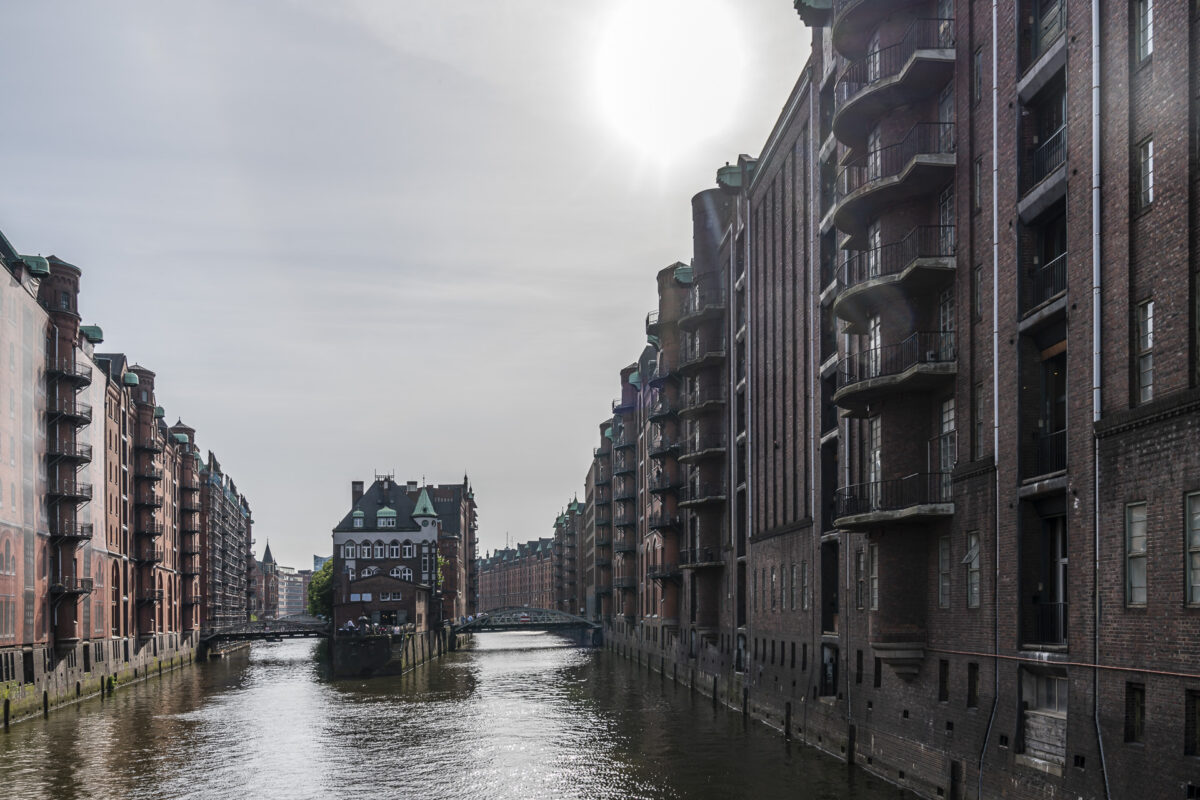


Stage 2: From Hamburg to Stockholm by night train
We passed the time waiting for the night train at the 25hours Hotel. The Altes Hafenamt Hotel is right next to the 25hours Hotel HafenCity, which has a very spacious lounge area on the first floor that you can use. It’s quite convenient for a few hours without feeling pressured to buy anything. Just before 9:00 PM, we headed to the central station, which is conveniently reachable by bus or alternatively by subway from HafenCity.
The Swedish night train, which starts in Berlin, arrived in Hamburg on time. So shortly after 10:00 PM, we were already settled in our 2-person sleeping compartment. With two large pieces of luggage, the storage space was a bit tight as expected – otherwise, everything was tip-top.
Travel time: 11 h 54 min (direct, overnight)
What did we pay? 212 CHF per person for a 2-person compartment in the sleeping car
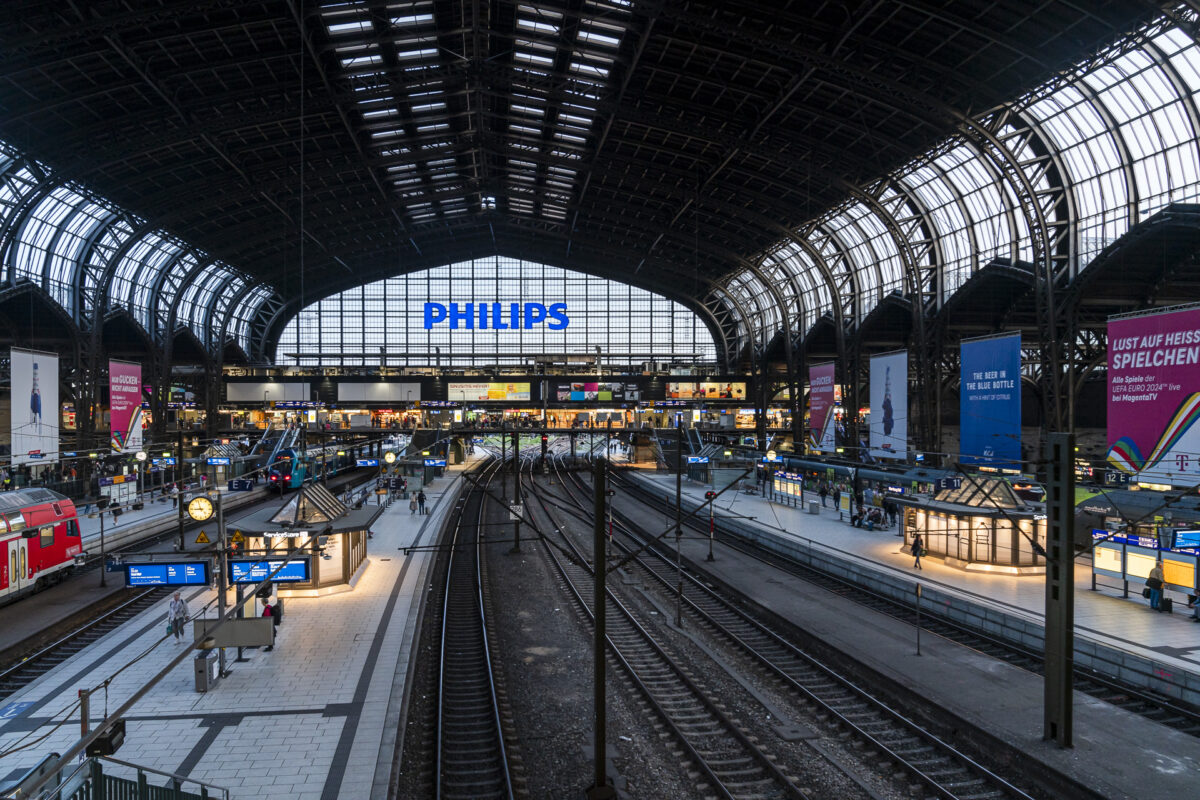


Stockholm Tips
We had timed our Baltic Sea trip so that we had five sightseeing days in Stockholm. Plenty of time to explore the various neighborhoods spread across different islands and scout for tips. Once the separate blog post is completed, it will be linked here.
Must-sees in Stockholm: The fantastic view from Mariaberget
Where to get good coffee in Stockholm: Many places – these we tried: Pascal Coffee Bar, Drop Coffee, Komet Café, Volca Coffee
Our top Stockholm tip for foodies: Best drink & food combo: Tjoget | Bucket list foodie spot: Restaurant Frantzén
Where we stayed in Stockholm: Bank Hotel (Partner link) at Arsenalsgatan 6 in central Stockholm’s Östermalm district
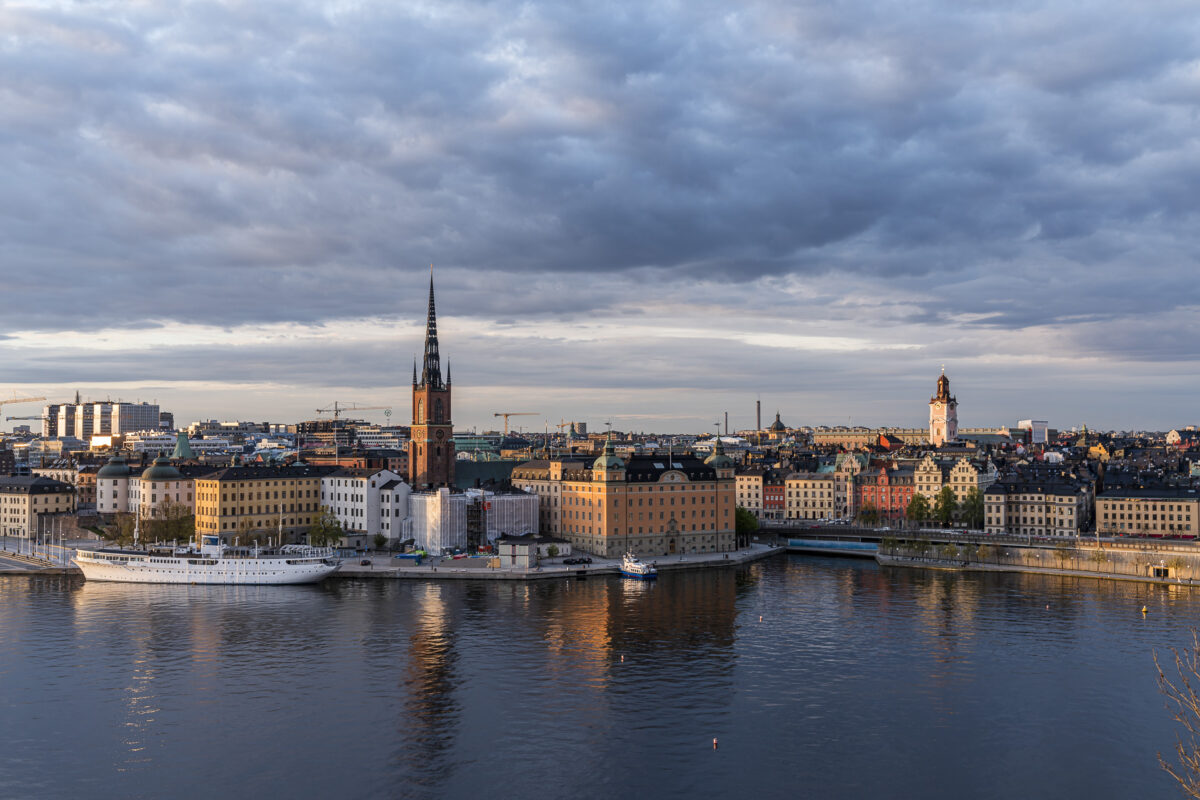
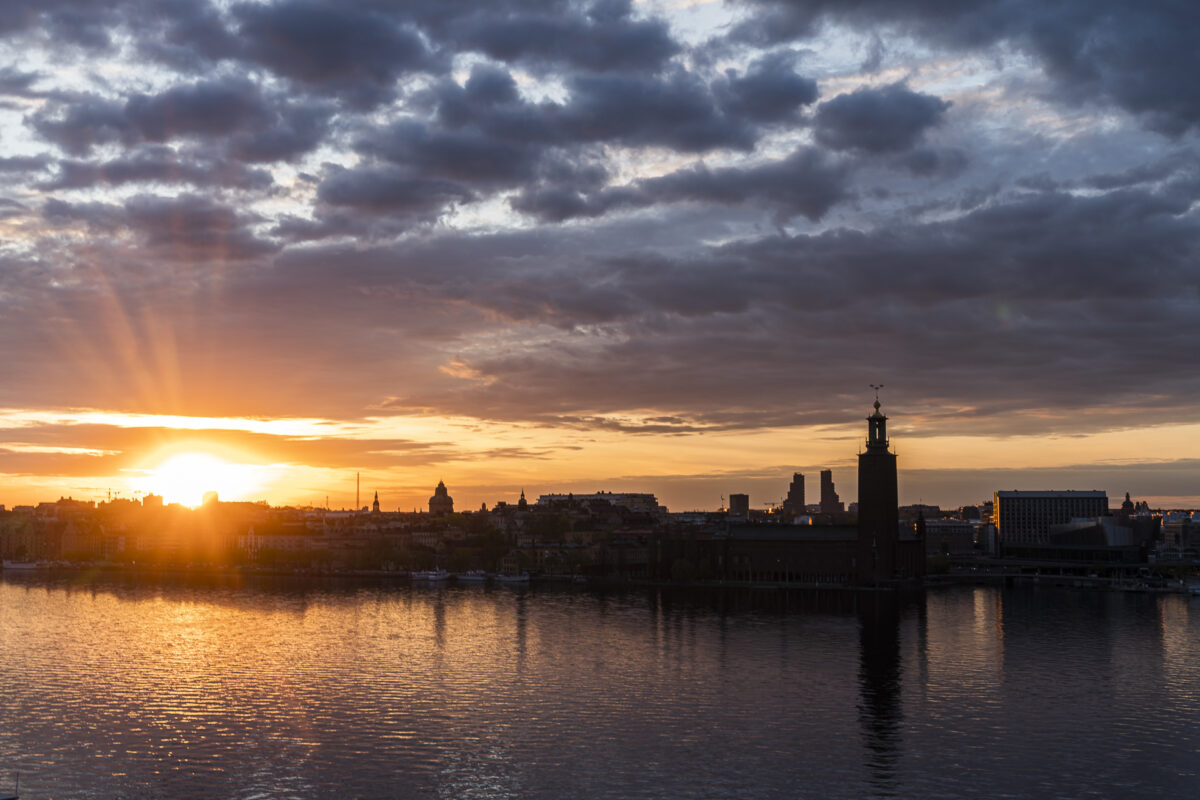
PS: If you have more time, you can of course also take the train from Hamburg to Copenhagen first and then take the night train to Stockholm. Since our last visit to the Danish capital was not too long ago, we deliberately skipped this stop in favor of a slightly longer stay in Stockholm.
Stage 3: By ferry from Stockholm to Helsinki
After four relaxed and sunny days in Sweden’s capital, we continued to Helsinki. We first took the subway line 13 from central Stockholm to the “Gärdet” station, from where the Tallink Silja ferry terminal is a 15-minute walk. In addition to Tallink Silja, the Viking Line also offers a direct daily ferry connection from the Swedish metropolis to the Finnish capital. The departure and arrival times, as well as the duration of the crossing (16 h 45 min (Tallink Silja) vs. 16 h 15 min (Viking Line)), are comparable. The Tallink Silja offers seemed slightly cheaper to us. Boarding is straightforward and quick – just type the booking number at the self-check-in counter, and you get the ticket, which also serves as the room key. The advantage of a ferry crossing from Stockholm to Helsinki is that you get a quasi “free” archipelago tour, allowing you to admire the Stockholm archipelago from the ship until late in the evening. Another highlight is the approach to Helsinki’s South Harbor the next morning. The journey passes just a few meters from the fortress island of Suomenlinna (UNESCO World Heritage) and offers a magnificent view of the Finnish capital’s “skyline.”
Regarding food, the ship offers various dining options. Alternatively, you can, of course, bring something on board. We were genuinely pleasantly surprised by the quality on the Silja Symphony. We enjoyed dinner at the Grill House.
Travel time: 16 h 45 min (Departure at 4:45 PM in Stockholm, Arrival at 10:30 AM in Helsinki); there is a time difference on this route
What did we pay? 182 CHF for two people in a double cabin of the A-Class.
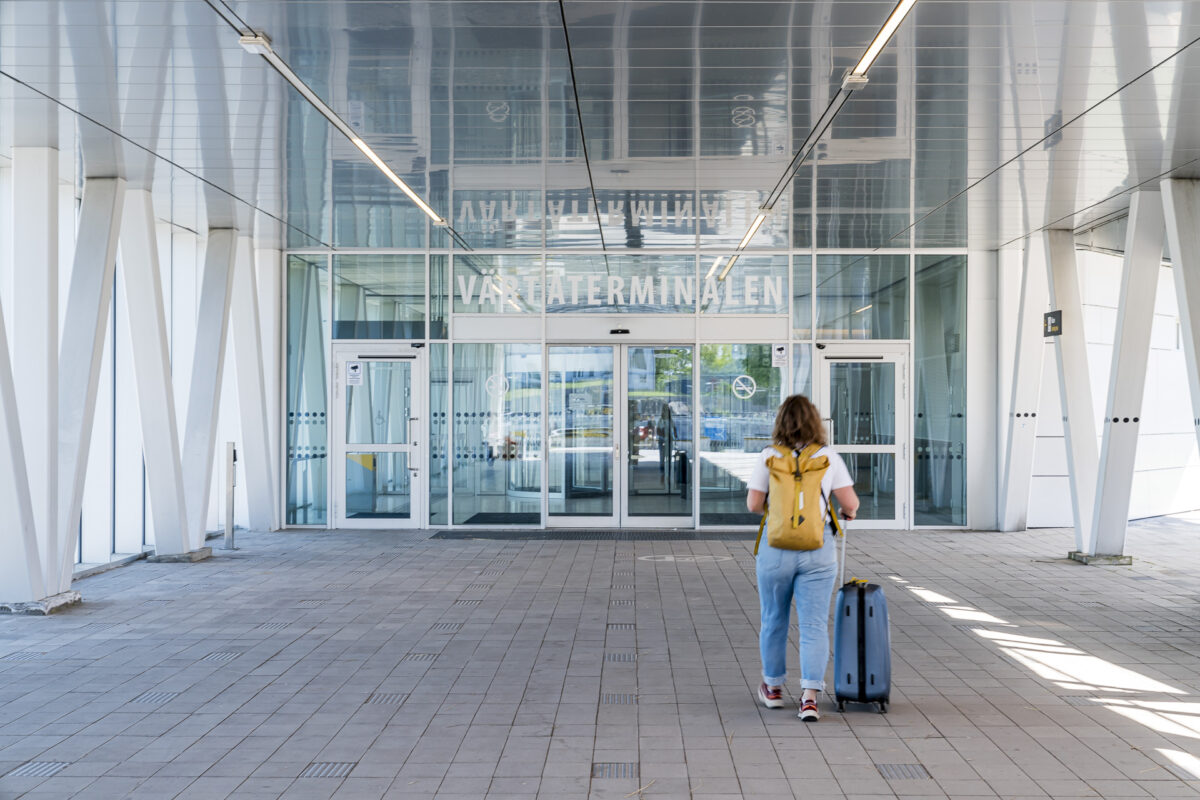
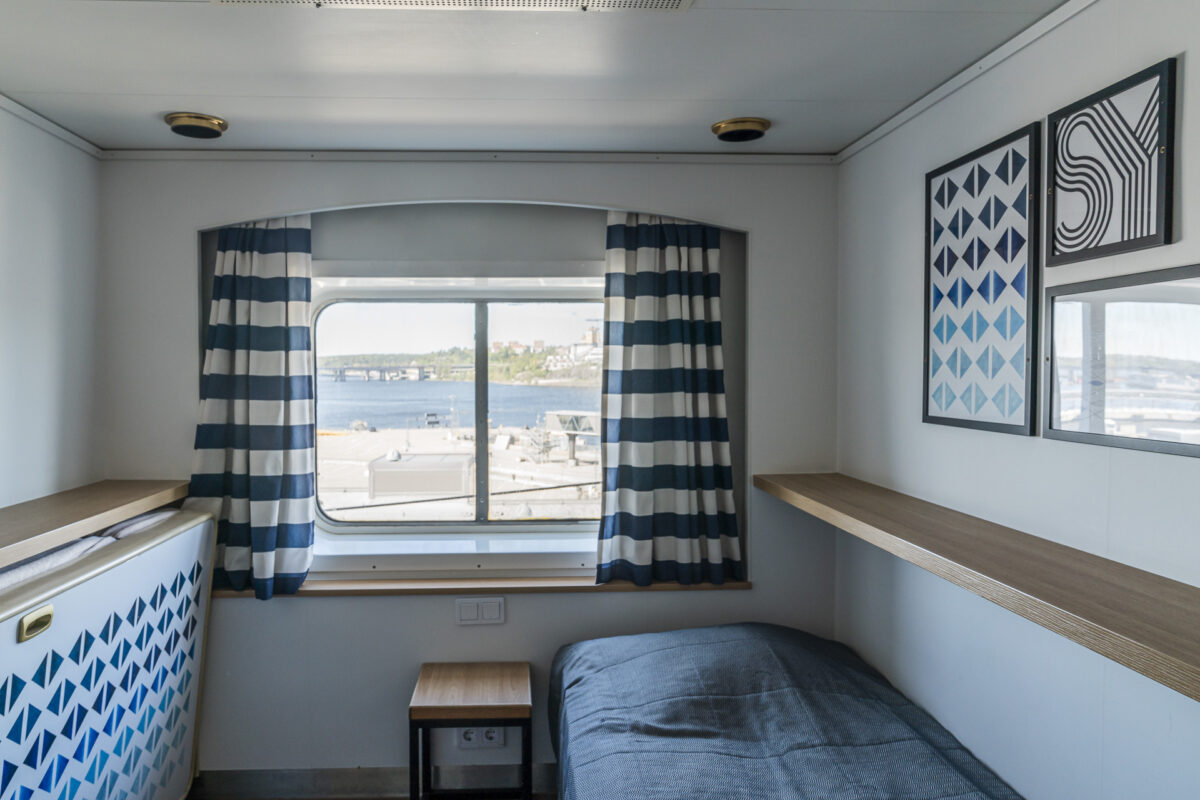
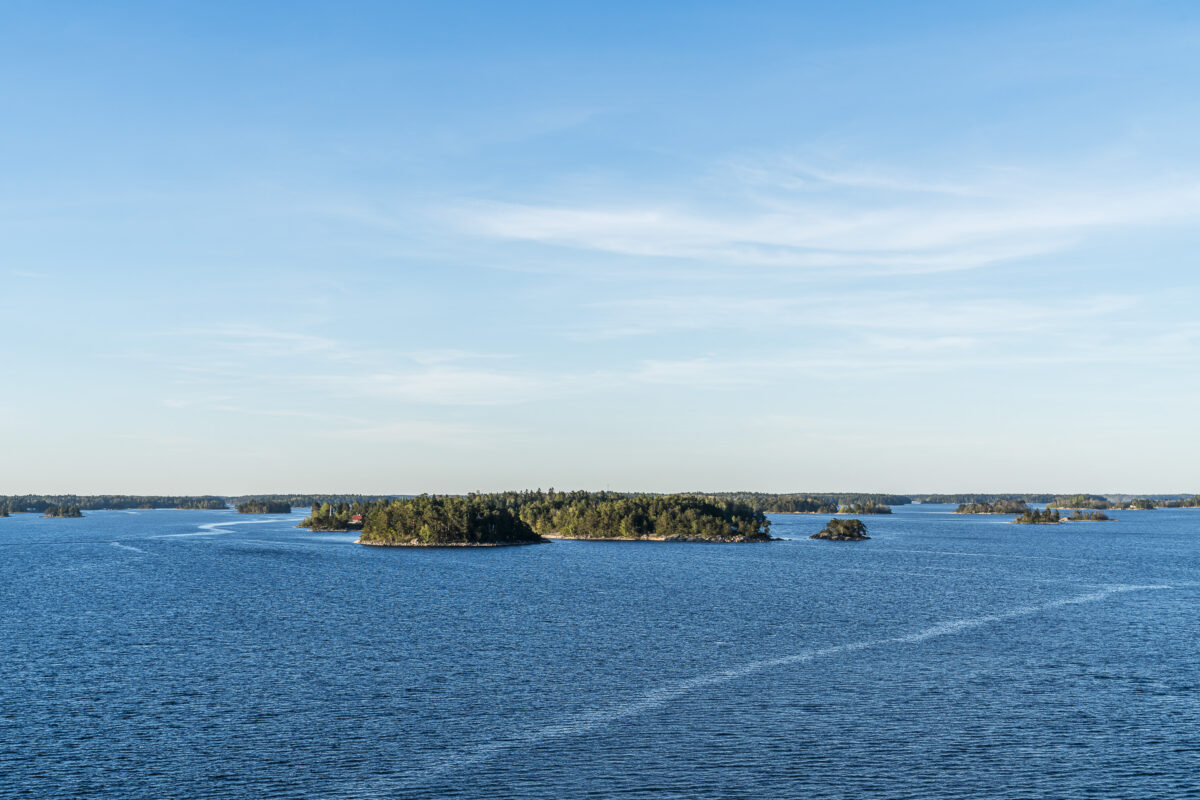
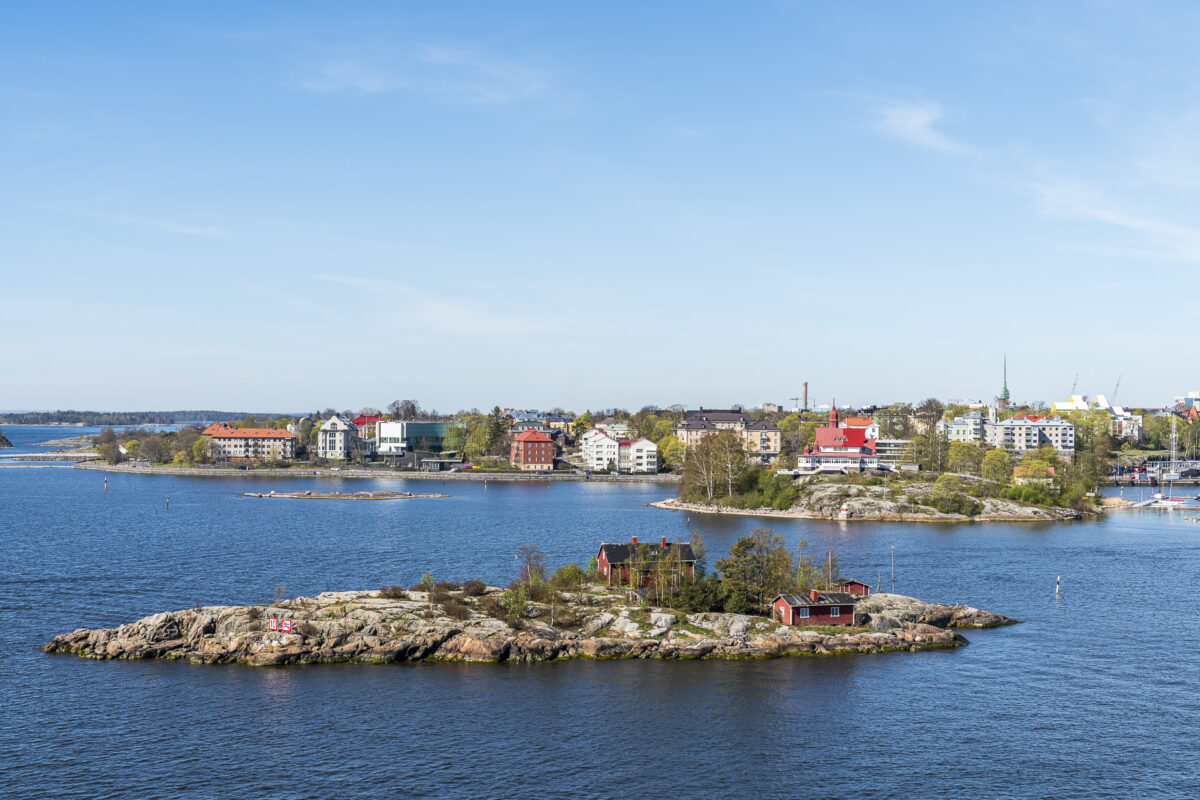
Helsinki Tips
We only planned a one-night stopover in Helsinki. We had exactly 24 hours to refresh our impression of the Finnish capital before continuing to Tallinn. We celebrated New Year’s Eve 2013/2014 here and saw some classic sights back then. This time, we limited ourselves to the walkable city center and were amazed at how much you can pack into half a day. Our city tour took us through the Design District, to the Amos Rex and HAM art museums, and of course to Senate Square.
Must-sees in Helsinki: A visit to the Amos Rex art museum, located in the 1930s Glass Palace (Lasipalatsi)
Where to get good coffee in Helsinki: A good choice in the Design District is Andante Speciality Coffee
Our top Helsinki tip for foodies: Restaurant Grön on Albertinkatu 36 – amazing!
Where we stayed in Helsinki: The Hotel Kämp located directly on the Esplanade (Partner link) | Pohjoisesplanadi 2
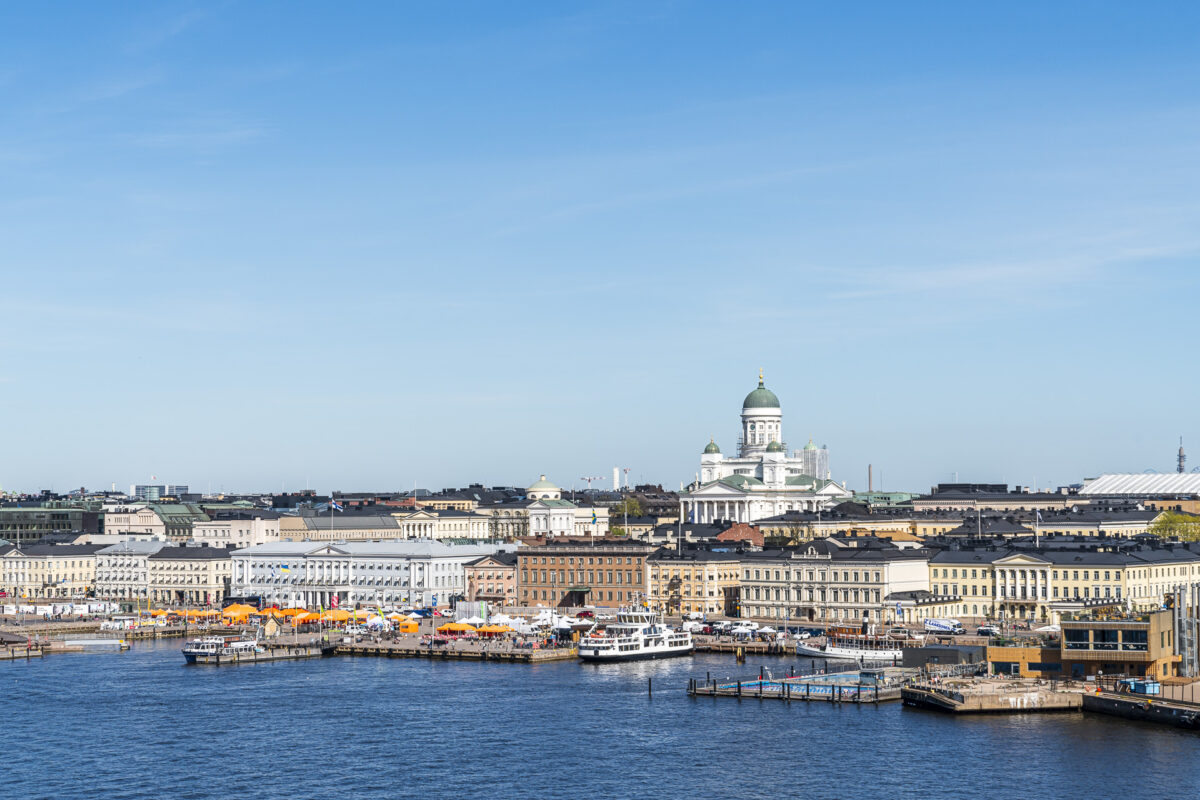
You can find more Helsinki tips here: Travel to Helsinki. Additionally, here is a tip for planning your Baltic Sea trip: The ferry from Stockholm to Helsinki makes a stop in Mariehamn. You can also check out the Åland Islands. I visited in 2017 and fell in love with the archipelago. Here is the blog post: Off to Åland
Stage 4: By ferry from Helsinki to Tallinn
The fastest ferry connections from Helsinki to Tallinn take two hours. This makes a trip to the Estonian capital feasible as a day trip from Helsinki. We did exactly that on our first visit to Helsinki in 2013/2014. This time, we planned one night in Tallinn, giving us more time than most other visitors. There are three major ferry operators on the Helsinki-Tallinn route: Tallink Silja, Eckerö Line, and Viking Line. Tallink offers the fastest and most frequent connections, with ferries departing every two hours from the “Länsiterminaali” (West Terminal). Tickets can be obtained at a self-check-in machine using the booking number. Onboard, you can find a seat either on the outdoor deck (limited seating) or indoors. The ship offers a variety of dining options, and while it may seem crowded at first, you can usually find a seat. We traveled on the MyStar and sat near the “Fast Lane” self-service restaurant, where we got coffee and a pastry.
My tip: Most seating and restaurants are on Deck 9!
Travel time: 2 h
What did we pay? 52 CHF (other times were cheaper – due to a floorball tournament in Tallinn, connections were in high demand, leading to higher prices).

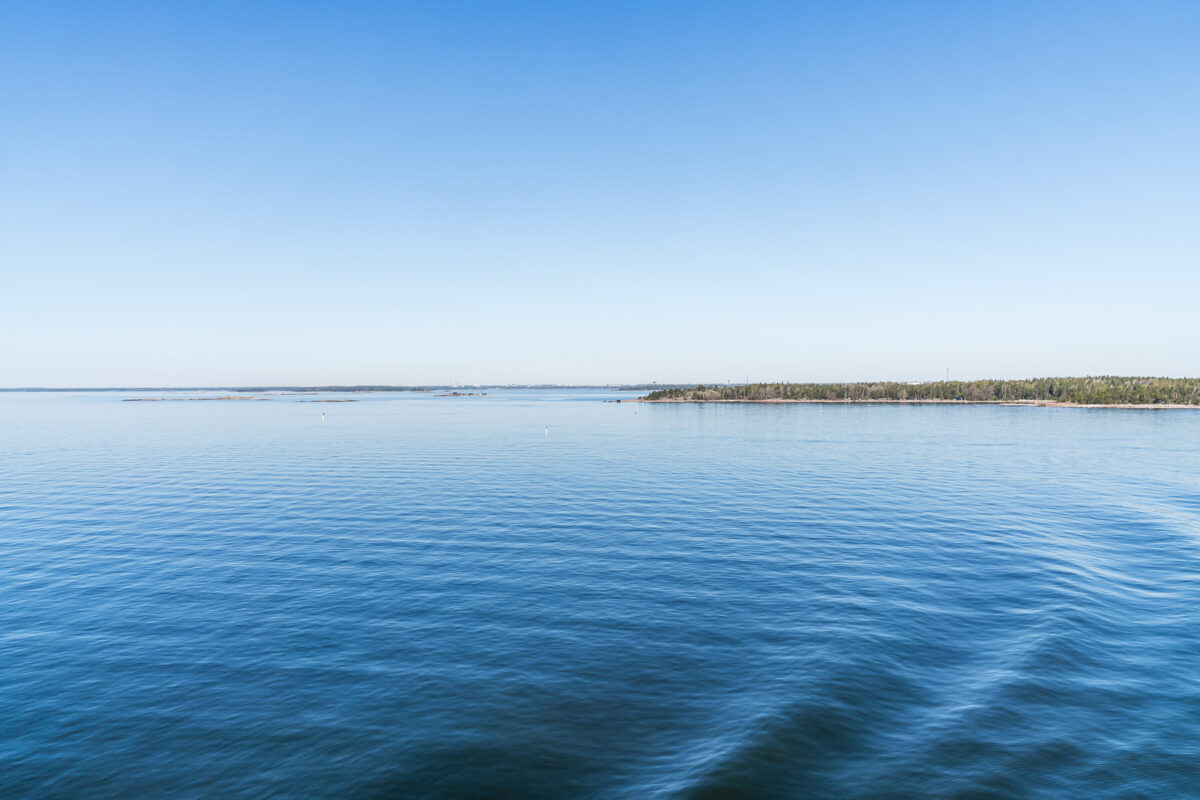
Tallinn Tips
From the ferry terminal, you can reach the old town of Tallinn either on foot (about 20 minutes) or by bus (stop “Balti jaam” (train station)). The Estonian capital is currently investing in expanding the tram lines to the harbor – the opening is planned for this year.
Since 1997, Tallinn’s old town has been a UNESCO World Heritage Site. The main attractions are all within walking distance, and you can get a good overview in half a day. However, there are also very cool areas outside the picturesque historic old town alleys. For example, directly north of the train station, where the modern market hall (Balti jaam Turg) and the Telliskivi Creative City are located. Here you can find art galleries, bars, street food stalls, and trendy restaurants. Our culinary tip for Tallinn (see below) is also located in this district.
Must-sees in Tallinn: The free panoramic view of Tallinn from the Kohtuotsa viewing platform
Where to get good coffee in Tallinn: A tip you can’t miss: Kiosk No1 | Toompuiestee 22a
Our top Tallinn tip for foodies: Restaurant Fotografiska on the 6th floor of the eponymous photography museum with the best view of the old town
Where we stayed in Tallinn: 5 minutes from the train station and in a prime location, the Nunne Boutique Hotel (Partner link) is a really good choice | Nunne 14
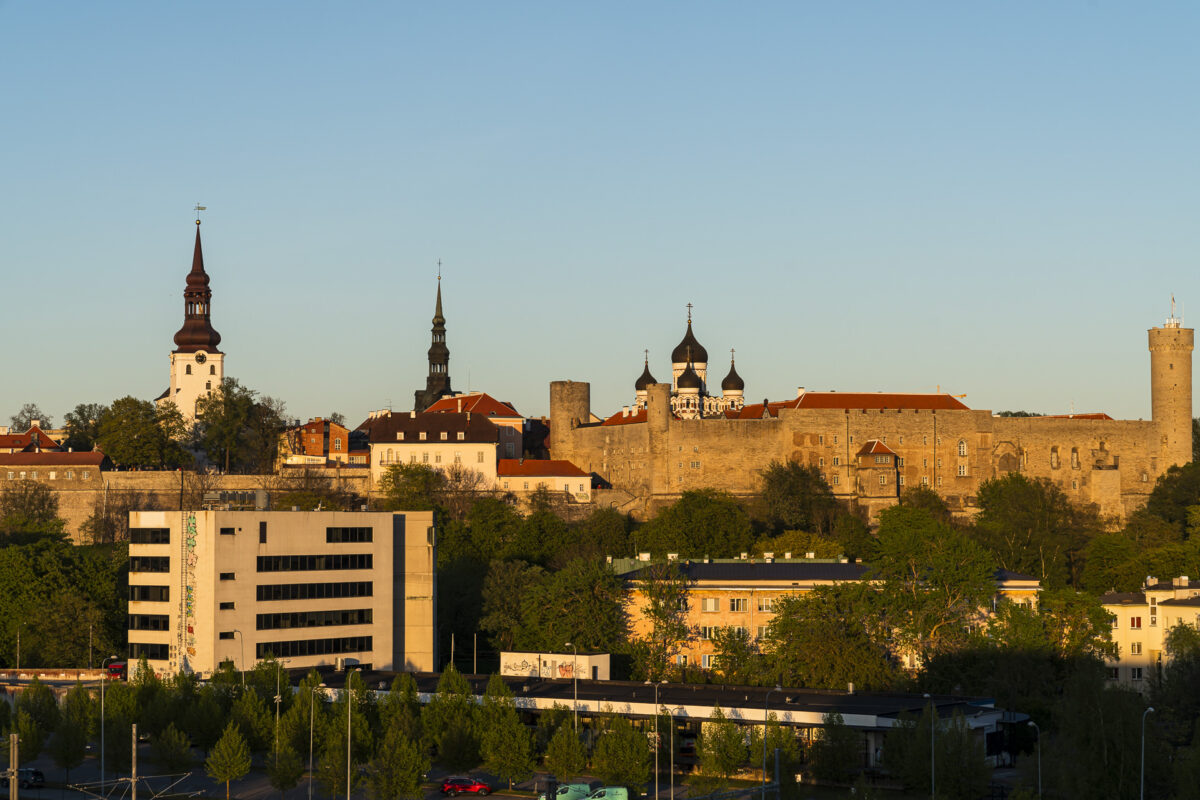
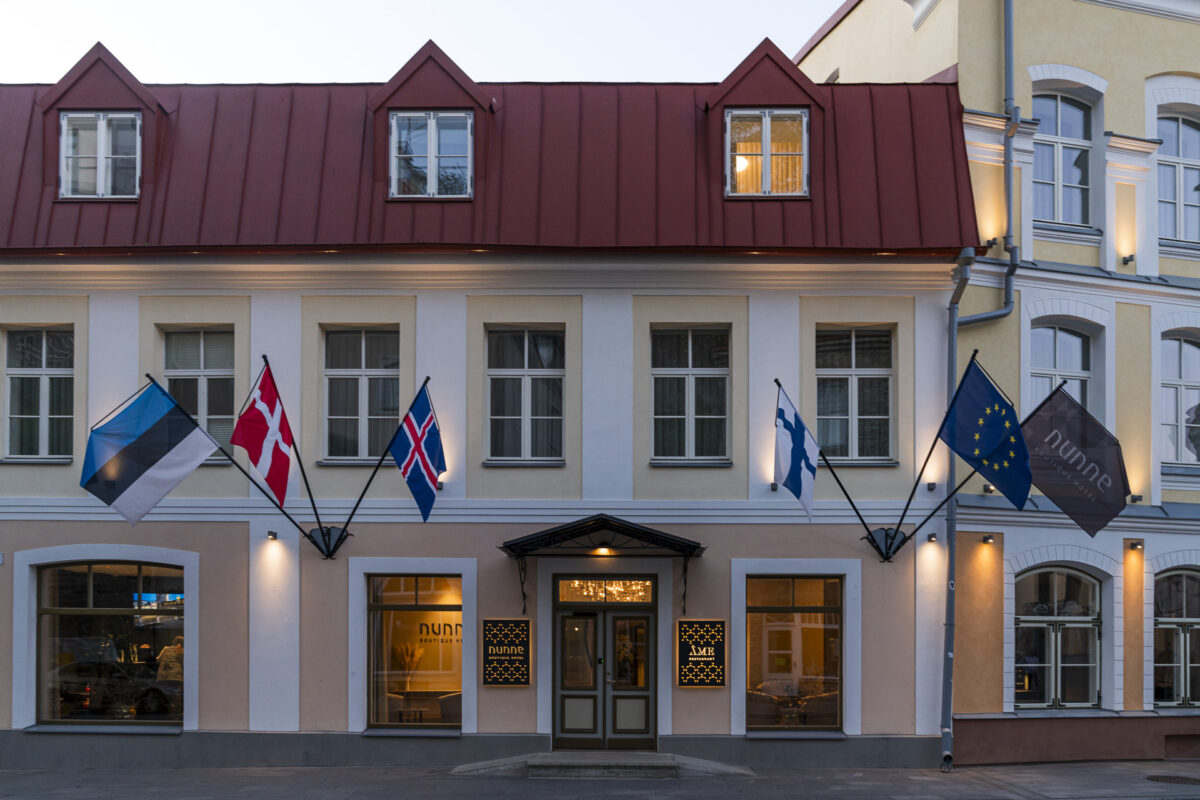
In this older blog post about Tallinn, you’ll find more tips for a short stay in the pretty Estonian capital.
Stage 5: From Tallinn to Riga by bus
Originally, we wanted to take the train for all journeys between cities, except for the Stockholm – Helsinki – Tallinn route. Unfortunately, the train connection between the Baltic capitals is not yet well-developed enough to make this practical. Under the “Rail Baltica” project, the expansion of the rail link from Warsaw via Kaunas, Riga, and Tallinn is a long-planned endeavor, which is being tackled in sections. The goal is to have a travel time of just under two hours between Tallinn and Riga.
Currently, the situation is as follows:
If you want to travel by train from Tallinn to Riga, you need to first take the Estonian railway Elron to Valga (duration 3h 47min) and then change to the Latvian railway Pasažieru vilciens. The Valga – Riga journey takes another 2h 55min. The main problem is that the train connections are not coordinated. Depending on the day of the week, this leads to absurdly long waiting times in Valga. On a Saturday, we would have had to take the following connection:
Departure from Tallinn at 07:11 AM, arrival in Valga at 10:58 AM
Departure from Valga at 16:52 PM, arrival in Riga at 19:47 PM
Tickets for the Latvian connection can be purchased a maximum of 14 days in advance. We therefore looked for alternatives and found Luxexpress. This is one of several bus companies offering multiple daily direct connections between the two cities with a travel time of 4h 25min. Ticket prices start at 16 euros. We opted for Relax seats and paid the equivalent of 28 CHF per person. As long as the train connection on this route is not improved, this is a time-efficient and very comfortable travel option to get from Tallinn to Riga (or vice versa).
Travel time: 4 h 25 min (bus connection)
What did we pay? 28 CHF per person for a Relax seat
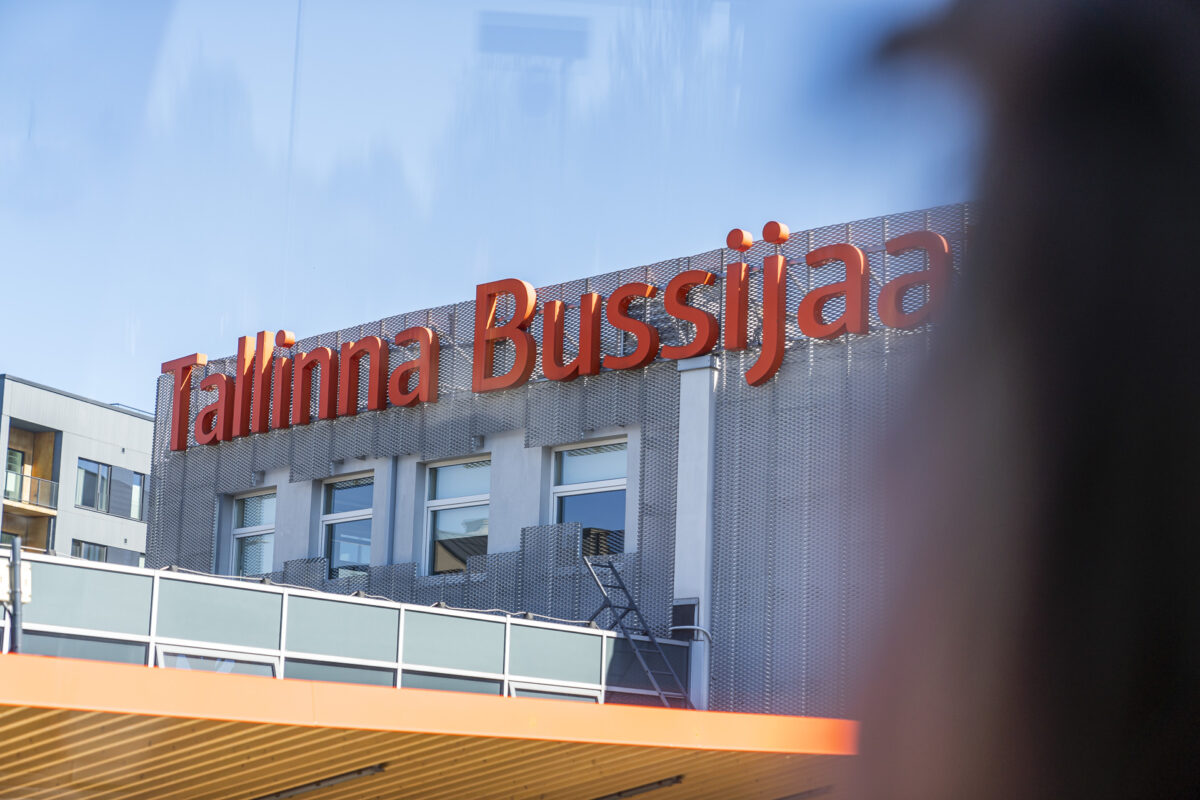
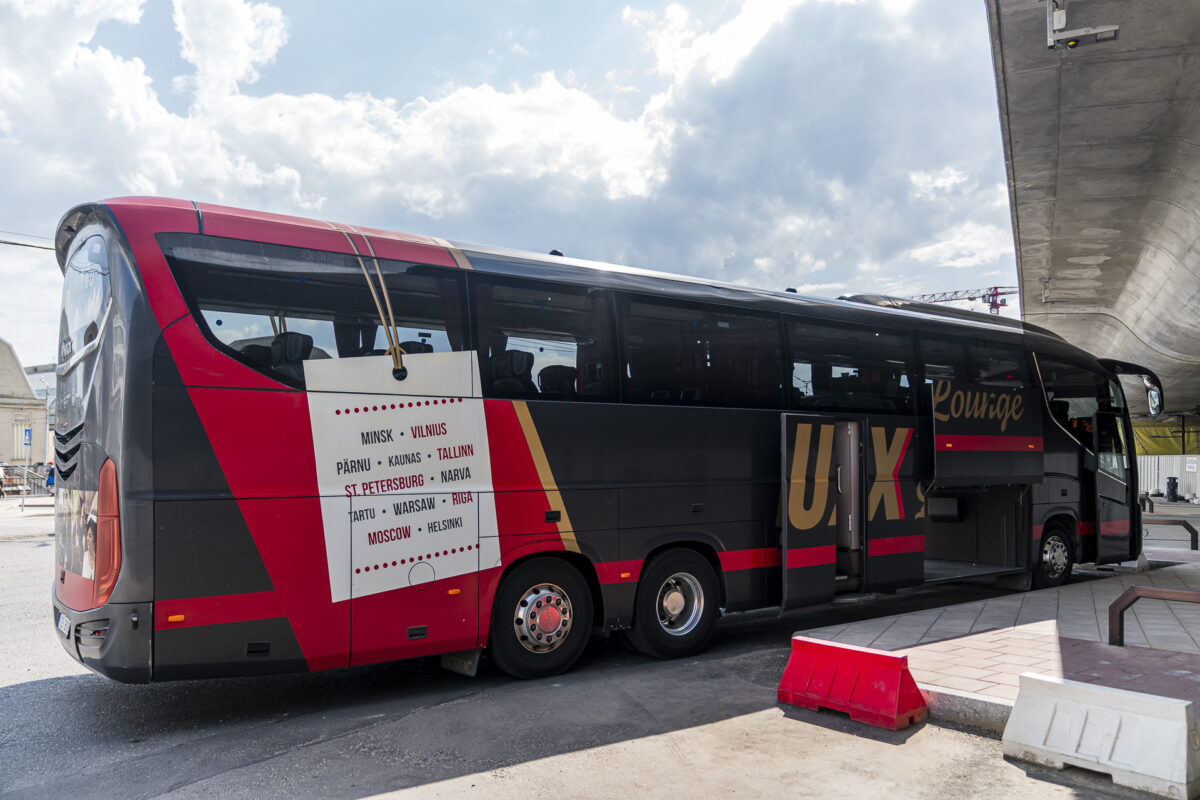
Riga Tips
We spent a few days in the Latvian capital in December 2017 and wrote a fairly detailed blog post about it (Travel Guide Riga). For this reason, we only planned one night in Riga this time. Between the bus arrival (3:25 PM) and the train departure to Vilnius the next day (3:28 PM), we had almost exactly 24 hours to explore Riga. If you’re visiting Riga for the first time, I recommend planning at least two full days – the old town, like Tallinn and Vilnius, is a UNESCO World Heritage Site and impresses with its numerous historic buildings. Another highlight is the extensive park areas. During our last visit, the gray weather and winter temperatures prevented us from strolling through the Bastejkalns park. We made up for that this time!
Must-sees in Riga: The Art Nouveau facades around Alberta iela, including a visit to the Art Nouveau Center
Where to get good coffee in Riga: This time we chose Rocket Bean Roastery at Miera iela 29/31
Our top Riga tip for foodies: For excellent fine dining; Max Cekot Kitchen or the more centrally located Japanese restaurant Shoyu
Where we stayed in Riga: In the middle of the old town at the Grand Palace Hotel (Partner link) | Pils iela 12

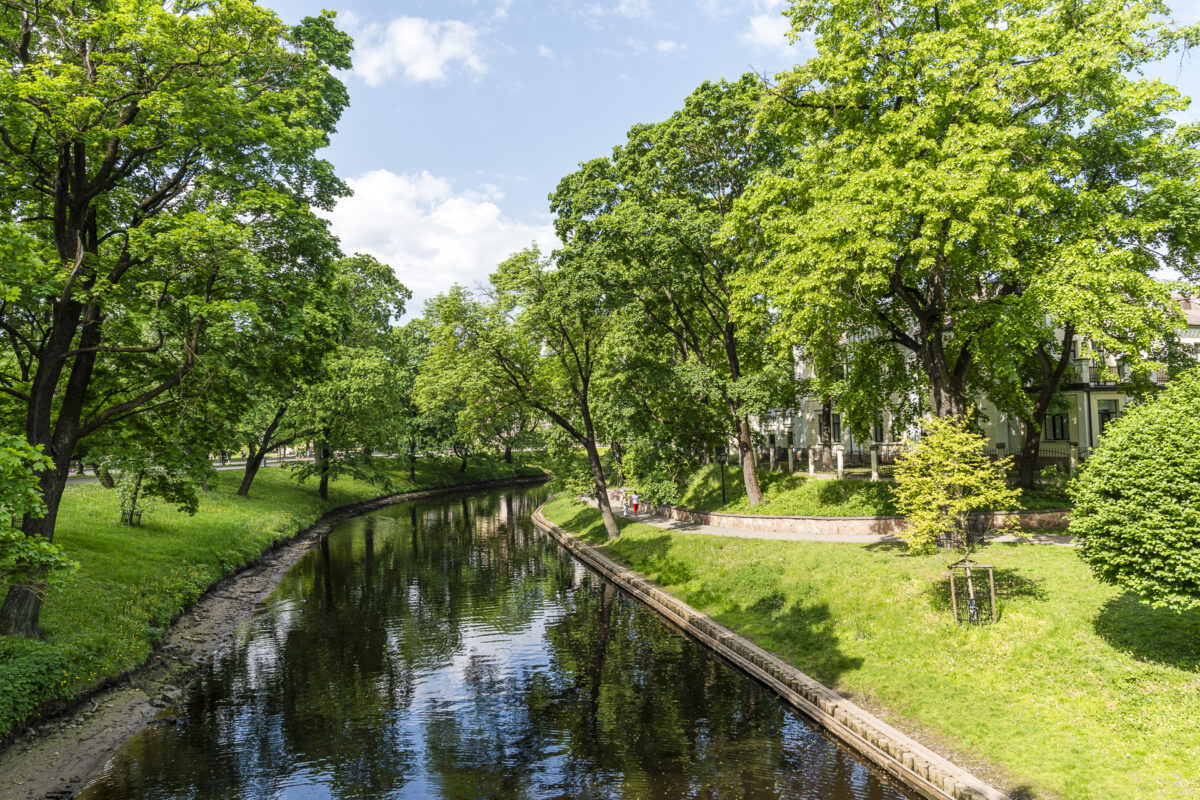
Stage 6: From Riga to Vilnius by train
Our journey around the Baltic Sea continued from Riga by train as planned. The train left Riga station precisely at 3:28 PM. The cross-border connection is offered once a day by the Lithuanian railway company LTG Link. Tickets, including seat reservations, can be purchased online up to 30 days in advance. We chose first-class seats, which included a 0.5-liter bottle of mineral water, one cup of coffee or tea, and a small sweet snack per person. Overall, it was an absolutely comfortable and punctual ride.
Travel time: 4 h 23 min (direct)
What did we pay? 34 CHF (first class)
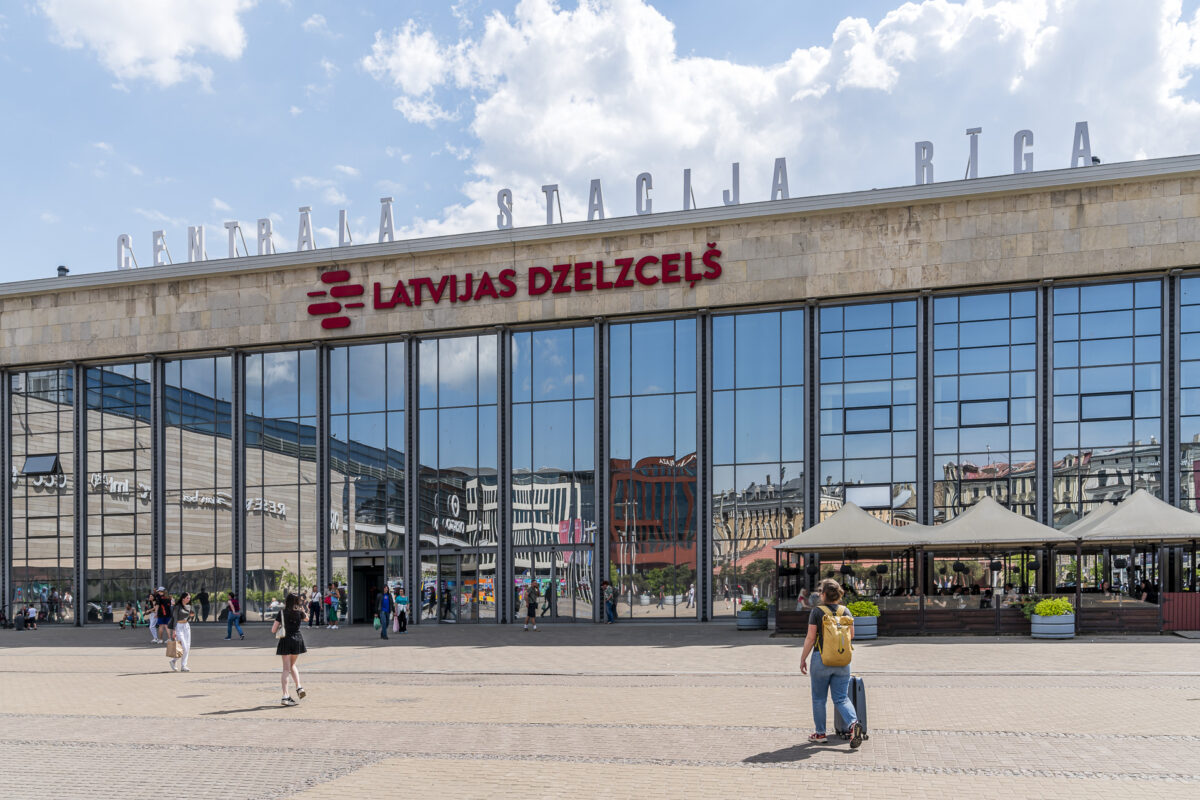
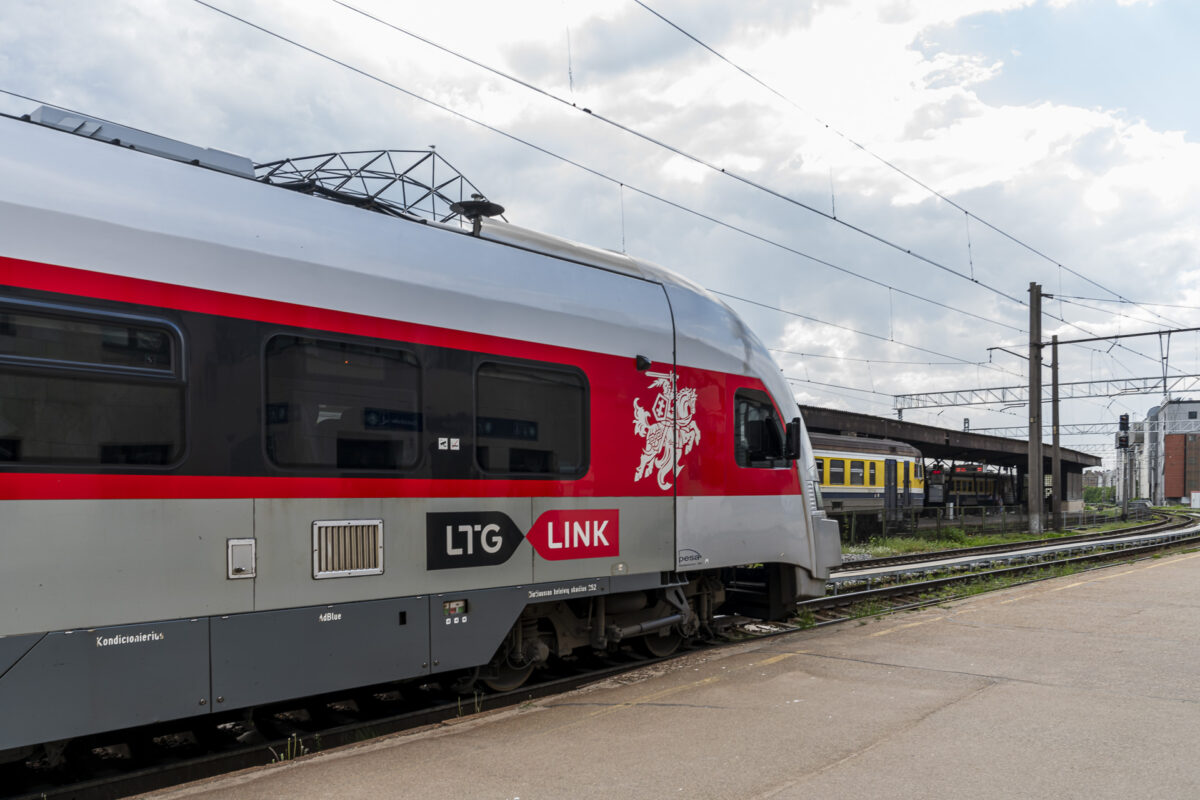
Vilnius Tips
The Vilnius train station is located on the edge of the old town. We walked the 1.3 kilometers to our hotel in the middle of the old town. Since I was traveling with a rolling suitcase instead of a backpack, this required some carrying as the cobblestone streets in both Riga and Vilnius are not very rolling suitcase-friendly. But I was aware of that. We checked into our hotel in Vilnius for two nights to have enough time to explore the extensive old town with its magnificent baroque churches as well as the alternative neighborhoods, such as the self-proclaimed Republic of Užupis. A separate blog post on Vilnius is also planned. But of course, we have our top tips for the Lithuanian capital in advance.
Must-sees in Vilnius: The 360° view over the old town from the bell tower of St. John’s Church (Šv. Jonų bažnyčios varpinė)
Where to get good coffee in Vilnius: Best cold brew on the way to the Lukiškės Prison 2.0 attraction: Kavos Reikalai
Our top Vilnius tip for foodies: Reserve a table at the Lithuanian fine dining pioneers at Restaurant Džiaugsmas (tasting menu for under 100 CHF)
Where we stayed in Vilnius: The chic Hotel Pacai (Partner link) (Didžioji g. 7) – a member of Design Hotels
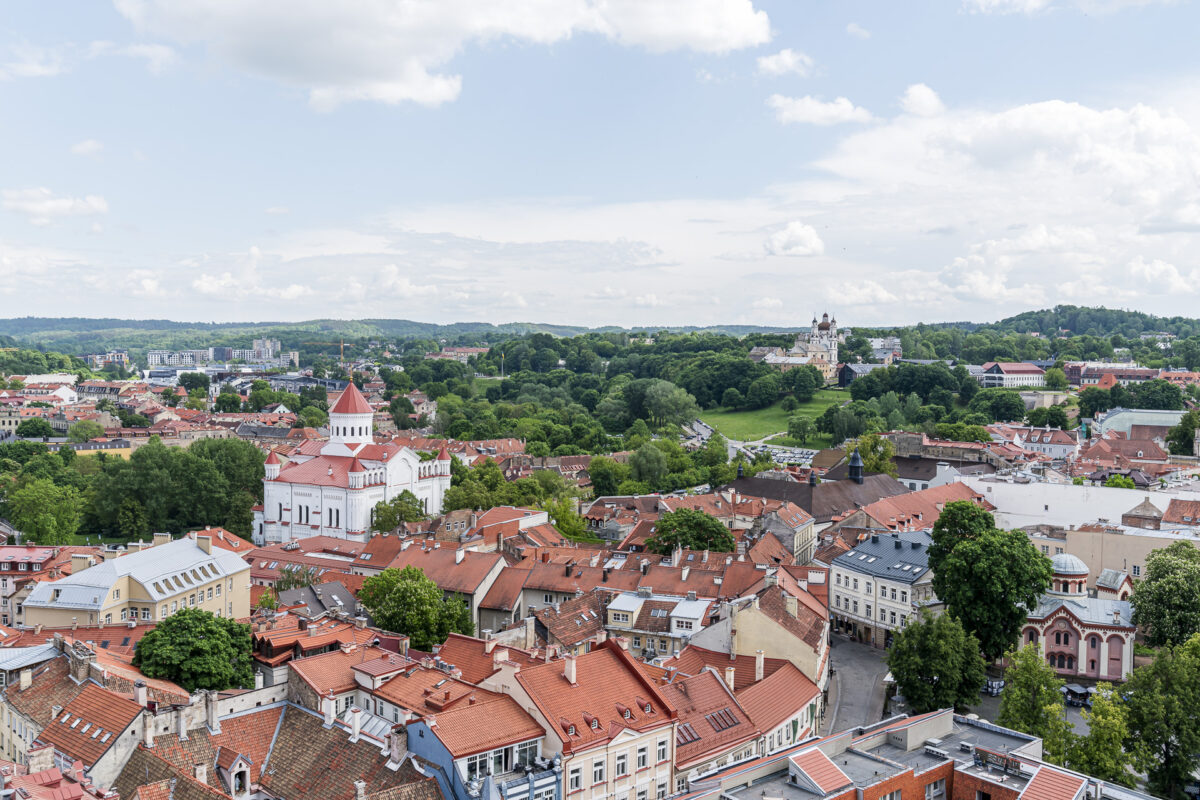
After visiting the three Baltic capitals, I asked myself which one I liked the most. The answer is more challenging than expected because they are quite different. I am still a big fan of Riga! Vilnius also has many exciting corners. The striking contrasts between modern and historic neighborhoods are interesting here. With one or two more days, you could also take a trip to the outskirts. Compared to the other cities, Tallinn is the one with the most day tourists.
Stage 7: From Vilnius to Warsaw by train
The journey from Vilnius to Warsaw started with the same train company we traveled with from Riga to Vilnius. Once a day, LTG Link offers a coordinated connection with the Polish train company PKP Intercity on the Vilnius – Warsaw – Krakow route. Tickets for the entire route can be purchased from both LTG Link and PKP Intercity. Note that you need to change trains from LTG Link to the Polish Intercity at the Lithuanian border station Mockava. This worked smoothly for us. We departed Vilnius on the minute and the Polish connecting train was ready when we arrived in Mockava.
Travel time: 8 h 51 min (with transfer in Mockava); there is a time difference on this route
What did we pay? 25 CHF (second class); there is no first class, and only the Polish segment had seat reservations on our ticket.

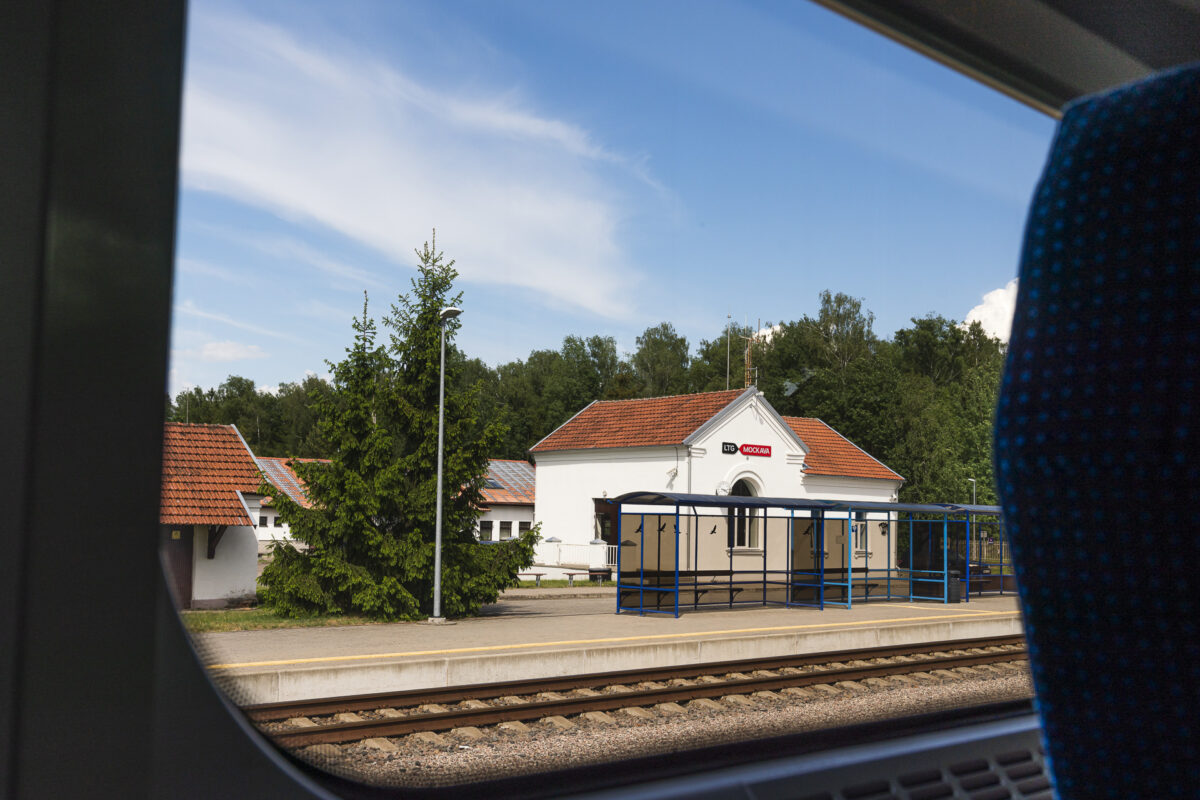
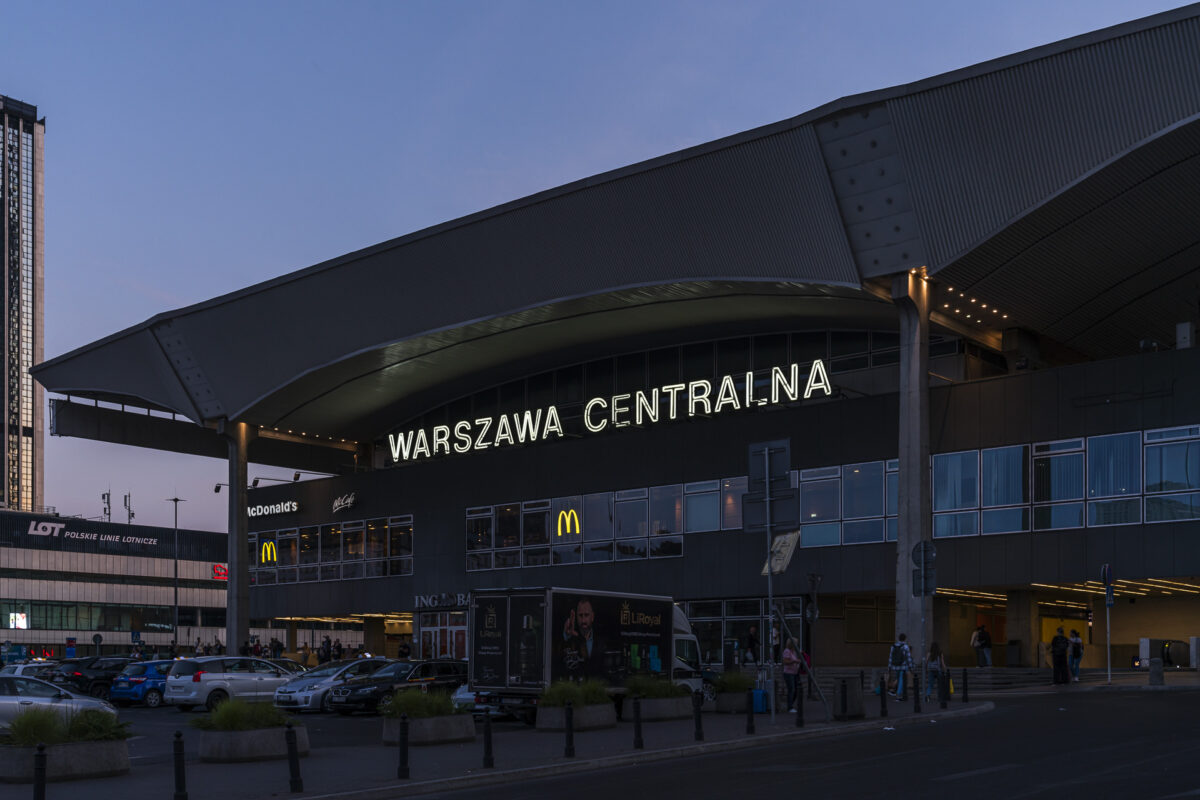
For this route, tickets can also be purchased online up to 30 days in advance.
Warsaw Tips
We also planned two nights in Warsaw. Since the train arrives in Warsaw after 8:00 PM, there is not much time for sightseeing on the day of arrival. We quickly realized that one full day is not enough to discover all the exciting corners of Warsaw, so we had to focus. We chose a tour of the historic old town. This was largely rebuilt in the early 1950s after being almost completely destroyed in World War II, and was honored by UNESCO in 1980 with its inclusion in the World Heritage list. A beautiful view over the bustling square in front of Zamoyski Palace can be found from the viewing platform of the nearby St. Anne’s Church. From there, we walked through the old town to the Museum of the History of Polish Jews. The engaging audio guide tour (included in the admission) takes about two hours – but it is absolutely worth it in my opinion!
Must-sees in Warsaw: An audio guide tour through the Museum of the History of Polish Jews
Where to get good coffee in Warsaw: A popular choice in the city center; Na Bank Speciality Coffee | plac Bankowy 4
Our top Warsaw tip for foodies: Refined Polish cuisine at Bez Gwiazdek (also here: tasting menu for under 100 CHF)
Where we stayed in Warsaw: Hotel Warszawa in the iconic Prudential skyscraper (Partner link) | plac Powstańców Warszawy 9
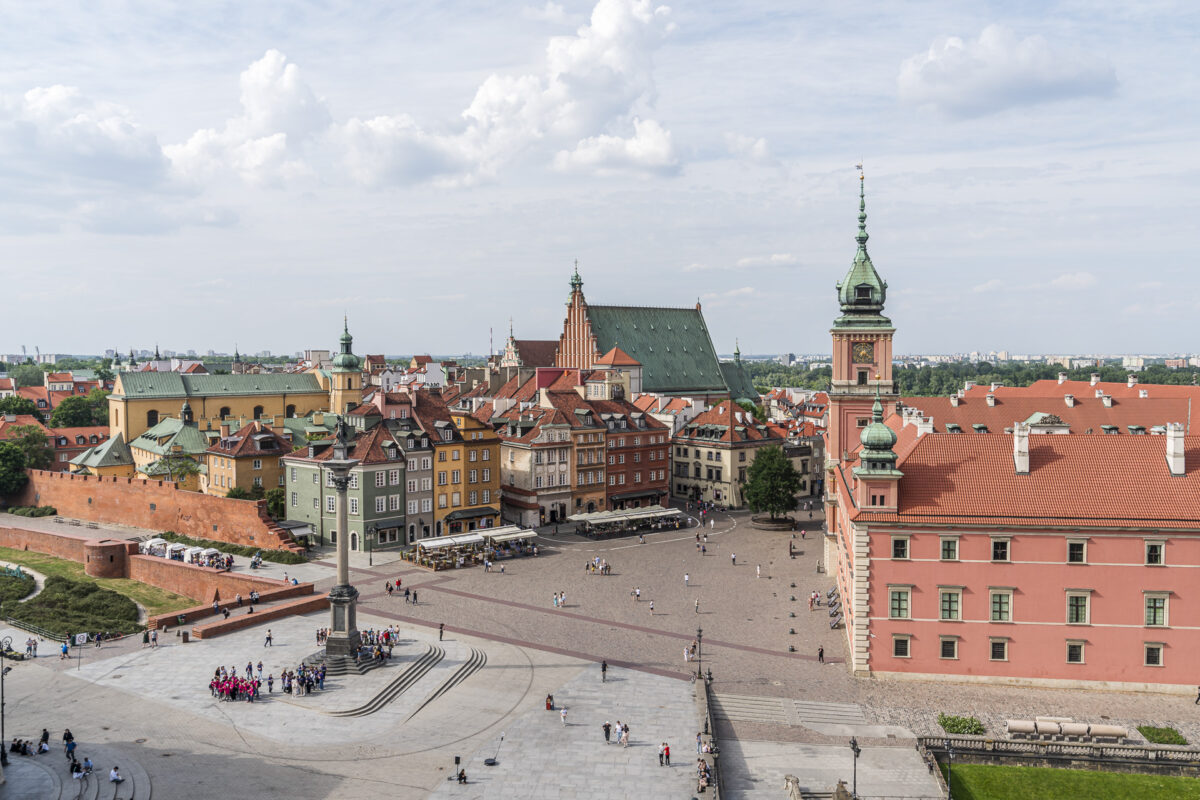
This short stay in the Polish capital definitely made me want to return with more time!
Stage 8: From Warsaw to Zurich via Berlin by train
The last two train stages of our Baltic Sea journey took us from Warsaw to Zurich via Berlin. We made a primarily culinary stopover in Berlin for two more nights. We stayed at the Motel One Berlin Mitte (Partner link). Incidentally, this was my first Motel One stay – and probably not my last, as I find nothing to complain about the price-performance ratio.
We became familiar with the train connections from Berlin to Poland and back two years ago during our trip to Gdańsk. Everything went smoothly again on the trip from Warsaw to Berlin. The route is served by the Polish Intercity, and there are usually five direct connections daily (departures about every two hours).
We booked first-class tickets, which included a seat reservation, water, a hot drink (coffee or tea), and a sweet snack. We will fondly remember the friendliest “mini-bar” service ever!
Travel time: 5 h 35 min (direct)
What did we pay? 40 CHF (first class)

But what would a train journey be without a single disruption? Then there would be nothing exciting to tell. Deutsche Bahn also thought so and promptly moved the departure time of our booked train for the return journey from Berlin to Zurich forward by one hour. Due to construction, of course. Luckily, I checked the departure times the night before, so we overcame this hurdle and otherwise enjoyed a very relaxed return trip to Zurich.
Travel time: 9 h 21 min (with transfer in Basel); due to construction! Without construction, the travel time is 8 h 33 min
What did we pay? 112 CHF (first class)
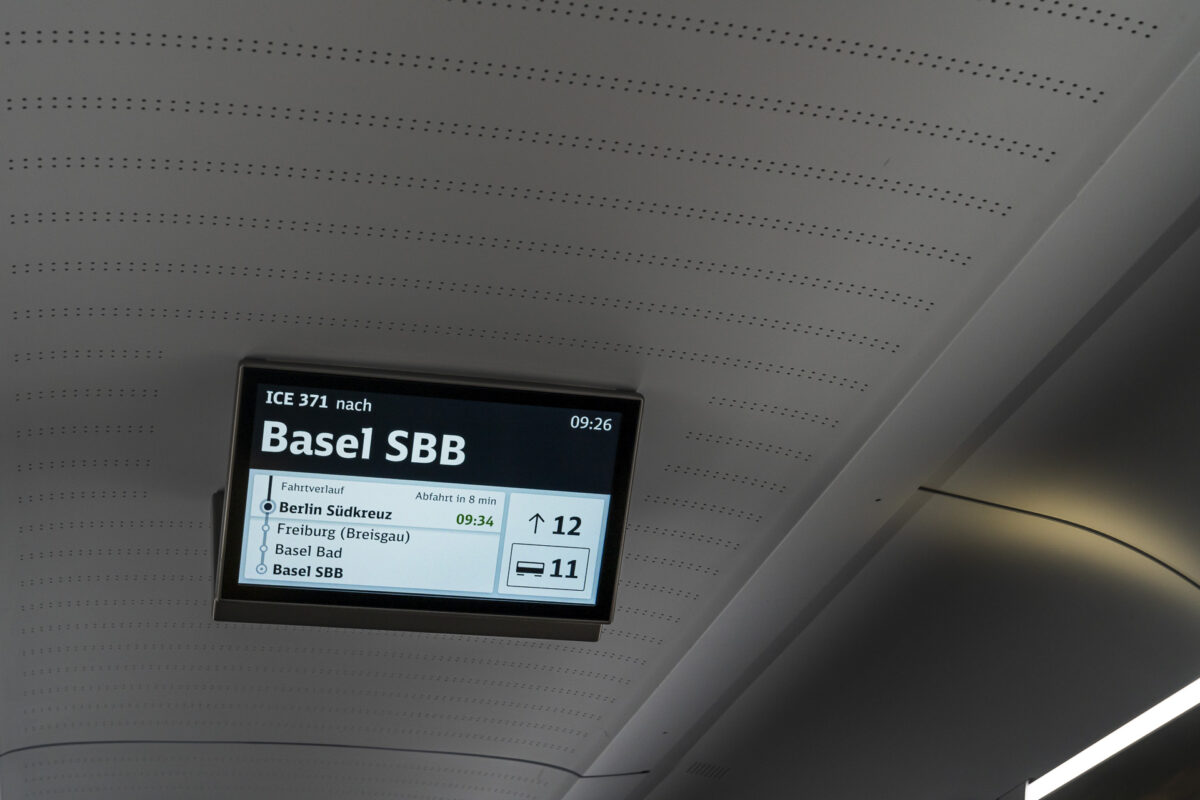

Practical tips and links for your train journey around the Baltic Sea
- Note that Helsinki, Tallinn, Riga, and Vilnius are one hour ahead of us. When traveling by ferry from Stockholm to Helsinki, set your clocks forward one hour and set them back one hour when traveling from Vilnius to Warsaw – this is automatically accounted for in the schedules.
- Here are the links to the national railway companies:
Route Hamburg – Stockholm: sj.se (our choice) or snalltaget.se
Route Tallinn – Riga: Elron (Tallinn – Valga route) and Pasažieru vilciens (Valga – Riga route) or alternatively: Luxexpress (bus)
Route Riga – Vilnius: LTG Link
Route Vilnius – Warsaw: LTG Link and Intercity PL (we booked with LTG)
Route Warsaw – Berlin: Intercity PL or Deutsche Bahn (we bought the ticket from Deutsche Bahn) - To compare ferry connections, the website ferryscanner is helpful. However, I recommend booking tickets directly with the selected ferry operator (in our case: Tallink Silja).
- It’s a good idea to check the departure times of the respective connections again the day before travel. Times can change, as shown by our return trip from Berlin to Zurich.
- An overview of construction-related schedule changes at Deutsche Bahn can be found here: Bauinfos Fernverkehr
- We did not have to present a “physical” (printed) paper ticket anywhere. The QR codes on the digital tickets were sufficient for all connections.
- We paid a total of 640 CHF per person for the train and bus tickets, and we bought all tickets individually. Comparing the price with the Interrail Global Pass showed that, depending on the scenario, the Global Pass plus the necessary additional reservations would have cost a bit more. With a specifically tailored itinerary to the Global Pass, a few francs could possibly have been saved. According to other reports, it is unclear whether a sleeper reservation can be made with the Global Pass on SJ. For the ferry connections from Stockholm to Helsinki and onwards to Tallinn, there may be discounts with the Global Pass – but the savings are usually minor or depend on available quotas. Therefore, I prefer the option of booking individual tickets.


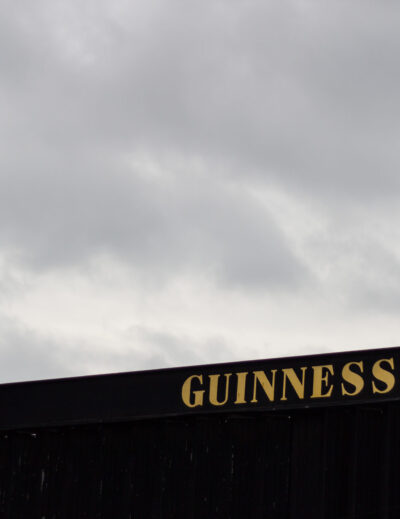
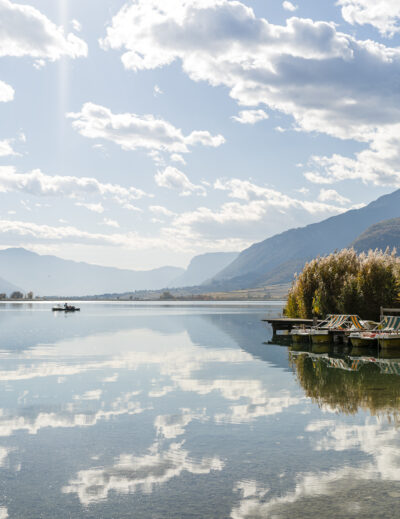
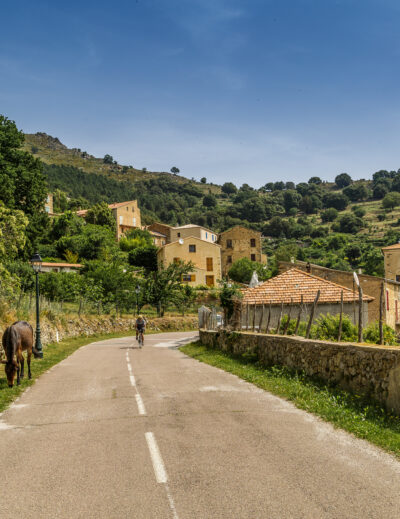
Leave a Reply